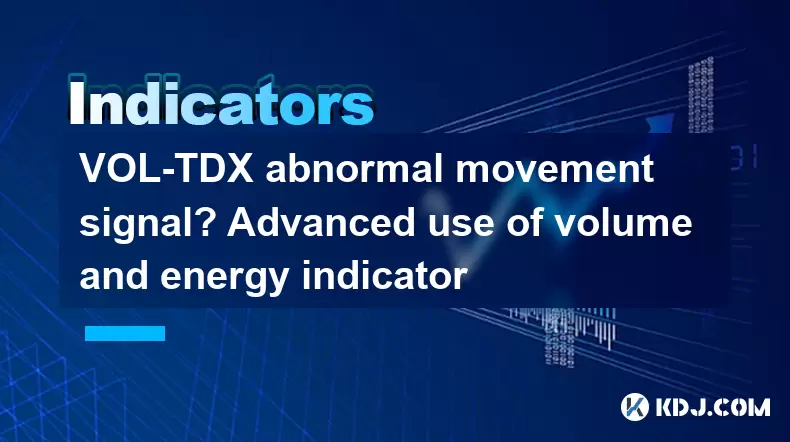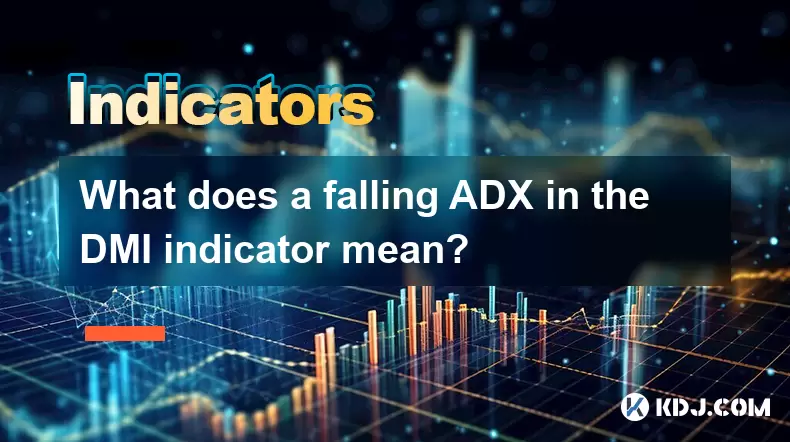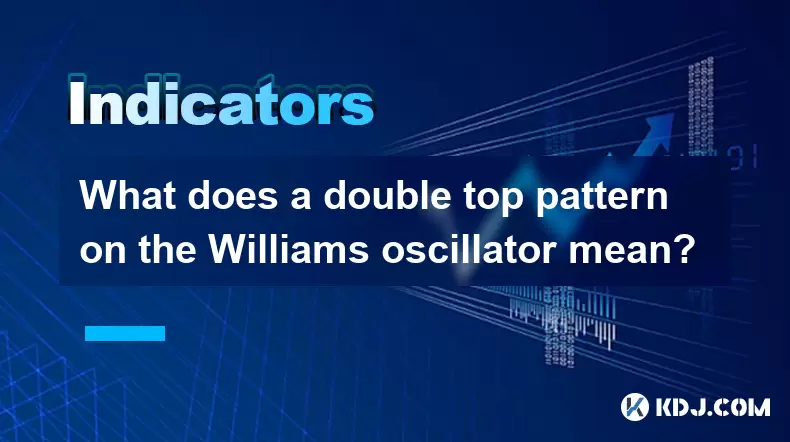-
 Bitcoin
Bitcoin $116700
0.24% -
 Ethereum
Ethereum $3973
4.34% -
 XRP
XRP $3.283
7.68% -
 Tether USDt
Tether USDt $1.000
0.01% -
 BNB
BNB $789.8
2.27% -
 Solana
Solana $176.2
3.31% -
 USDC
USDC $0.9999
0.00% -
 Dogecoin
Dogecoin $0.2238
5.14% -
 TRON
TRON $0.3389
-0.51% -
 Cardano
Cardano $0.7907
4.03% -
 Stellar
Stellar $0.4527
10.02% -
 Hyperliquid
Hyperliquid $41.07
4.27% -
 Sui
Sui $3.794
1.77% -
 Chainlink
Chainlink $19.49
10.40% -
 Bitcoin Cash
Bitcoin Cash $580.9
0.74% -
 Hedera
Hedera $0.2617
4.32% -
 Avalanche
Avalanche $23.41
3.67% -
 Ethena USDe
Ethena USDe $1.001
-0.03% -
 Litecoin
Litecoin $122.4
1.38% -
 Toncoin
Toncoin $3.364
1.49% -
 UNUS SED LEO
UNUS SED LEO $8.988
0.37% -
 Shiba Inu
Shiba Inu $0.00001295
2.82% -
 Uniswap
Uniswap $10.62
5.75% -
 Polkadot
Polkadot $3.922
4.46% -
 Dai
Dai $1.000
0.01% -
 Bitget Token
Bitget Token $4.494
2.15% -
 Monero
Monero $268.0
-1.30% -
 Cronos
Cronos $0.1523
3.68% -
 Pepe
Pepe $0.00001127
4.43% -
 Aave
Aave $285.4
4.85%
VOL-TDX abnormal movement signal? Advanced use of volume and energy indicator
The VOL-TDX indicator combines volume and energy data to help traders spot potential abnormal movements in cryptocurrency markets, enhancing trading decisions.
Jun 01, 2025 at 11:19 am

Introduction to VOL-TDX Indicator
The VOL-TDX indicator is a powerful tool used by cryptocurrency traders to analyze volume and energy within the market. This indicator helps in identifying potential abnormal movement signals, which can be crucial for making informed trading decisions. The VOL-TDX indicator combines volume data with technical analysis to provide a more comprehensive view of market trends and potential price movements. Understanding how to use this indicator effectively can significantly enhance a trader's ability to spot opportunities and manage risks.
Understanding Volume and Energy in Cryptocurrency Trading
In the world of cryptocurrency, volume refers to the number of coins or tokens traded within a specific period, while energy is a measure of the intensity and speed of these trades. The VOL-TDX indicator leverages both these aspects to give traders insights into the market's momentum and potential shifts. High volume with high energy can indicate strong interest and potential for significant price movements, whereas low volume and energy might suggest a lack of interest or a consolidation phase.
Identifying Abnormal Movement Signals with VOL-TDX
Abnormal movement signals are identified when the VOL-TDX indicator shows deviations from typical market behavior. These signals can be precursors to significant price movements and are often used by traders to anticipate trends. To spot these signals, traders should look for sudden spikes or drops in the indicator's readings, which could suggest that the market is entering a new phase. For instance, a sudden increase in volume and energy could indicate an upcoming bullish trend, while a sharp decline might signal a bearish movement.
Advanced Techniques for Using VOL-TDX
To maximize the effectiveness of the VOL-TDX indicator, traders can employ several advanced techniques:
Combining with Other Indicators: Use VOL-TDX in conjunction with other technical indicators like Moving Averages, RSI, or MACD to confirm signals and reduce false positives. For example, if VOL-TDX shows a spike in volume and energy, and the RSI indicates overbought conditions, it might suggest an imminent price correction.
Time Frame Analysis: Analyze VOL-TDX across different time frames to get a more comprehensive view of market trends. A signal on a shorter time frame might be noise, but if confirmed on a longer time frame, it could indicate a more significant trend.
Historical Data Comparison: Compare current VOL-TDX readings with historical data to identify patterns and anomalies. This can help in understanding whether the current market movement is typical or exceptional.
Setting Up VOL-TDX on Trading Platforms
To start using the VOL-TDX indicator, you need to set it up on your preferred trading platform. Here's how to do it on some popular platforms:
On TradingView:
- Open TradingView and select your preferred cryptocurrency pair.
- Click on the 'Indicators' button at the top of the chart.
- Search for 'VOL-TDX' in the search bar.
- Once found, click on it to add it to your chart.
- Adjust the settings as needed to customize the indicator to your trading strategy.
On MetaTrader 4 (MT4):
- Download and install the VOL-TDX custom indicator for MT4.
- Open MT4 and select your preferred cryptocurrency pair.
- Navigate to 'Navigator' on the left side of the platform.
- Find the VOL-TDX indicator under 'Custom Indicators'.
- Drag and drop it onto your chart.
- Adjust the settings as necessary to fit your trading approach.
Interpreting VOL-TDX Readings
Interpreting the VOL-TDX indicator involves understanding its various components and how they interact. The indicator typically consists of two main lines: the volume line and the energy line. The volume line shows the amount of trading activity, while the energy line indicates the intensity of that activity. When these lines diverge or converge, it can signal potential market movements.
Divergence: If the volume line is increasing but the energy line is decreasing, it might suggest that the market is losing momentum despite high trading activity. This could be a sign of an upcoming reversal.
Convergence: Conversely, if both lines are moving in the same direction, it indicates a strong trend. An upward movement in both lines could signal a bullish trend, while a downward movement might indicate a bearish trend.
Practical Examples of VOL-TDX Usage
To illustrate how VOL-TDX can be used in real trading scenarios, consider the following examples:
Example 1: A trader notices a sudden spike in both the volume and energy lines of the VOL-TDX indicator on a Bitcoin chart. This spike coincides with a news release about a major institutional investment in Bitcoin. The trader interprets this as a strong bullish signal and decides to enter a long position, expecting the price to rise.
Example 2: Another trader observes a significant drop in the energy line despite steady volume on an Ethereum chart. This divergence suggests that the market might be losing steam. The trader decides to close their long position and take profits, anticipating a potential price correction.
Fine-Tuning VOL-TDX for Different Cryptocurrencies
Different cryptocurrencies may exhibit unique trading patterns, and the VOL-TDX indicator can be fine-tuned to better suit these differences. For highly volatile assets like Bitcoin, you might want to adjust the sensitivity of the indicator to capture rapid market movements. On the other hand, for more stable cryptocurrencies, a less sensitive setting might be more appropriate to filter out noise and focus on significant trends.
Adjusting Sensitivity: Most platforms allow you to adjust the parameters of the VOL-TDX indicator. Increase the sensitivity for volatile assets by reducing the period length, and decrease it for stable assets by increasing the period length.
Customizing Thresholds: Some versions of the VOL-TDX indicator allow you to set custom thresholds for volume and energy levels. Experiment with these settings to find the optimal configuration for your trading strategy and the specific cryptocurrency you are trading.
Frequently Asked Questions
Q: Can VOL-TDX be used for all types of cryptocurrencies?
A: Yes, VOL-TDX can be used for all types of cryptocurrencies, but its effectiveness may vary depending on the asset's volatility and trading volume. Adjusting the indicator's settings to suit the specific characteristics of the cryptocurrency can enhance its utility.
Q: How often should I check the VOL-TDX indicator?
A: The frequency of checking the VOL-TDX indicator depends on your trading style. For day traders, checking it multiple times throughout the day might be necessary, while swing traders might only need to check it at key intervals, such as daily or weekly.
Q: Is VOL-TDX suitable for beginners?
A: While VOL-TDX can be a valuable tool for all traders, beginners might find it challenging to interpret its signals without additional experience. It's recommended for beginners to start with simpler indicators and gradually incorporate more advanced tools like VOL-TDX as they gain more market knowledge.
Q: Can VOL-TDX predict market movements with certainty?
A: No indicator, including VOL-TDX, can predict market movements with absolute certainty. VOL-TDX provides insights and signals based on historical data and current market conditions, but it should be used in conjunction with other analysis methods to make well-informed trading decisions.
Disclaimer:info@kdj.com
The information provided is not trading advice. kdj.com does not assume any responsibility for any investments made based on the information provided in this article. Cryptocurrencies are highly volatile and it is highly recommended that you invest with caution after thorough research!
If you believe that the content used on this website infringes your copyright, please contact us immediately (info@kdj.com) and we will delete it promptly.
- Roman Storm, Funding Effort, and the Looming Defense Retrial: A New York Minute on the Tornado Cash Case
- 2025-08-09 02:50:14
- Crypto's Wild Ride: XRP, Dogecoin, and the Altcoin Surge You Can't Ignore
- 2025-08-09 02:50:14
- Elon Musk, Bitcoin, and the Enduring Power of Approval: A Crypto Love Story?
- 2025-08-09 03:50:15
- Ruvi AI: The Next Big Thing After Ripple on CoinMarketCap?
- 2025-08-09 03:50:15
- Floki Price Surges: Elliott Wave and Fibonacci Setups Point to Potential Gains!
- 2025-08-09 02:30:16
- Pepe Price, RTX (Remittix?) & the $10K ETH Dream: NYC Crypto Chatter
- 2025-08-09 02:30:16
Related knowledge

What does it mean when the TRIX indicator suddenly diverges downward after a long period of convergence?
Aug 09,2025 at 12:56am
Understanding the TRIX Indicator in Cryptocurrency TradingThe TRIX indicator, or Triple Exponential Average, is a momentum oscillator used in technica...

Why is the rise limited after a MACD bottoming divergence?
Aug 09,2025 at 12:07am
Understanding MACD Bottoming Divergence in Cryptocurrency TradingThe MACD (Moving Average Convergence Divergence) is a widely used technical indicator...

What does it mean when the OBV continues to rise but the price is trading sideways?
Aug 08,2025 at 10:35pm
Understanding On-Balance Volume (OBV)On-Balance Volume (OBV) is a technical indicator that uses volume flow to predict changes in stock or cryptocurre...

What does a falling ADX in the DMI indicator mean?
Aug 09,2025 at 03:16am
Understanding the ADX and DMI Indicator FrameworkThe DMI (Directional Movement Index) is a technical analysis tool developed by J. Welles Wilder to id...

What does a double top pattern on the Williams oscillator mean?
Aug 09,2025 at 02:36am
Understanding the Williams %R OscillatorThe Williams %R oscillator is a momentum indicator developed by Larry Williams to identify overbought and over...

What is a nonce and how is it used in Proof of Work?
Aug 04,2025 at 11:50pm
Understanding the Concept of a Nonce in CryptographyA nonce is a number used only once in cryptographic communication. The term 'nonce' is derived fro...

What does it mean when the TRIX indicator suddenly diverges downward after a long period of convergence?
Aug 09,2025 at 12:56am
Understanding the TRIX Indicator in Cryptocurrency TradingThe TRIX indicator, or Triple Exponential Average, is a momentum oscillator used in technica...

Why is the rise limited after a MACD bottoming divergence?
Aug 09,2025 at 12:07am
Understanding MACD Bottoming Divergence in Cryptocurrency TradingThe MACD (Moving Average Convergence Divergence) is a widely used technical indicator...

What does it mean when the OBV continues to rise but the price is trading sideways?
Aug 08,2025 at 10:35pm
Understanding On-Balance Volume (OBV)On-Balance Volume (OBV) is a technical indicator that uses volume flow to predict changes in stock or cryptocurre...

What does a falling ADX in the DMI indicator mean?
Aug 09,2025 at 03:16am
Understanding the ADX and DMI Indicator FrameworkThe DMI (Directional Movement Index) is a technical analysis tool developed by J. Welles Wilder to id...

What does a double top pattern on the Williams oscillator mean?
Aug 09,2025 at 02:36am
Understanding the Williams %R OscillatorThe Williams %R oscillator is a momentum indicator developed by Larry Williams to identify overbought and over...

What is a nonce and how is it used in Proof of Work?
Aug 04,2025 at 11:50pm
Understanding the Concept of a Nonce in CryptographyA nonce is a number used only once in cryptographic communication. The term 'nonce' is derived fro...
See all articles

























































































